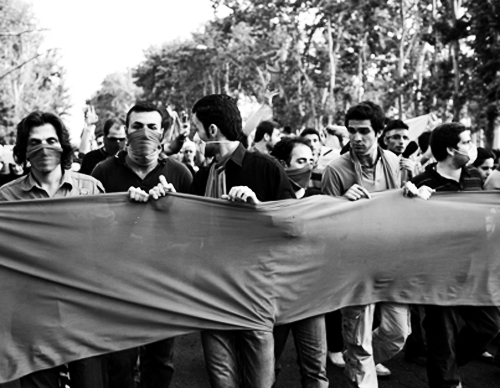The DailyStar-Last week, six months after Iran’s June 12 presidential elections, thousands of students protested against the government in universities across Iran – a strong signal that Iran’s domestic crisis is far from over, and moreover, entering a new phase.
Six months ago, the major focus of the hundreds of thousands of protesters who marched the streets of Tehran was to show their anger and dissatisfaction with the election results, which many believed were rigged and resulted in not only Mahmoud Ahmadinejad’s re-election, but also beliefs that this pre-planned coup was orchestrated with the support of the Revolutionary Guards, the para-military Basij, and the military intelligence.
But now we hear from those who continue to use any occasions to fill the streets, not just criticism of Ahmadinejad and the questionable election, but also criticism of the supreme leader, Ayatollah Ali Khamenei.
Iranian authorities might have originally thought that by arresting hundreds of top Iranian reformist politicians, journalists, civil society activists, and thousands of protesters, and that by opening fire on the people in the streets, they could control the situation and keep Ahmadinejad in office for a second term. All of this could not have been possible if Iran’s supreme leader did not back the government, and most importantly, the Revolutionary Guards.
For those following the pre- and post-elections events in Iran, it is not hard to understand who the Iranian people refer to when chanting “death to the dictator.”

Ahmadinejad may have rigged the election to secure his second term in office, but the brutal post-election crackdown could not happened without the approval of the supreme leader. The crackdown resulted in at least 30 protestor deaths (three of whom died in detention centers after enduring enormous pressure and torture), while many others who were detained endured much of the same, including sexual assault and rape.
The supreme leader legitimized the forced show trials of reformists by acknowledging coerced confessions as truth and by criticizing those, like Mehdi Karroubi, who highlighted the cases of rape in Iran’s prisons. Instead of listening to the voice of the civil rights movement, Khamenei’s policies legitimized one of the most unprecedented attacks on human rights Iran has seen since the 1979 revolution.
“Down with the dictator” is now the chant that targets the leaders of the Islamic Republic. Six months after the elections, the crackdown has neither slowed the protests, nor forced the opposition leaders to give up. Ironically, the crackdown mobilized many religious leaders, artists, popular political figures, and civil society leaders, like Nobel Peace Laureate Shirin Ebadi, along with millions of Iranians and non-Iranians, which has greatly damaged the image of the Islamic Republic of Iran.
At this time, Khamenei is faced with a huge legitimacy crisis within the country and internationally, making it difficult for the supreme leader’s regional supporters and allies to remain on his side. While dealing with this domestic crisis, Iranian leaders are now finding it increasingly difficult to sell their anti-American sentiment to the people of Iran. More importantly, Iranian leaders aren’t able to justify their nuclear defiance, a stance that has united the US and other Western countries against the regime.
On December 12, millions of Iranian all over the world gathered to remind the Iranian leaders that the world is still watching the continuation of extensive human rights violations. This time the Iranian Diaspora was using art, the global language to express its solidarity with Iranians inside the country and tell them that their voice has been heard. No doubt that the Internet era has made it impossible for the Iranian leaders to get away from the consequences of their reckless policies inside and outside of Iran.
